This article was co-authored by Cara Piskai. Dr. Cara Piskai, DMD is an Orthodontist and the Owner of Piskai Orthodontics in Voorhees, New Jersey. She has over five years of experience in orthodontics and dentofacial orthopedics. She completed a Doctor of Dental Medicine degree at the University of Pennsylvania School of Dental Medicine. She completed her residency and earned a Specialty Certificate in Orthodontics and a Master's degree in Oral Sciences at the University of Illinois-Chicago. Dr. Piskai is board-certified by the American Board of Orthodontics and is a member of the American Association of Orthodontists (AAO). She holds a position on the U.S. News & World Report Medical Review Board.
This article has been viewed 56,819 times.
Braces are a fact of life for many of us, and the benefits they confer are important. If you are currently wearing braces, you know that in the end your smile will be straighter and your bite will be more comfortable. Meanwhile, however, it's common to feel self-conscious about the brackets and wires that cover your teeth. If the prospect of visible braces causes you stress, consider ways you might seek less visible treatment options, minimize your braces' appearance, or employ tactics that redirect your focus.
Steps
Seeking Less Visible Treatment Options
-
1Get ceramic, or "clear," braces. Although traditional braces are less bulky than they used to be, they continue to be made of metal that contrasts strongly against white teeth. Ask your orthodontic whether ceramic braces might be a feasible alternative for your orthodontic needs. Ceramic braces are made from a tooth-colored ceramic material. They are often referred to as "clear" braces because the ceramic provides such effective camouflage. Some ceramic braces even utilize tooth-colored wires to further minimize your braces' appearance.
- Ceramic braces are not quite as strong as metal braces. This means your orthodontist will need to make more gradual adjustments and your treatment time may be lengthened.
- Your orthodontist will attach wires to your ceramic brackets using clear or tooth-colored ligatures, or rubber bands. These may become slightly stained over time, reducing the "invisible" quality of your ceramic braces, but as they are changed each visit, staining should not become a serious problem.
- Ceramic braces are generally more expensive than traditional metal braces. To minimize the extra cost, consider requesting ceramic braces just in the areas of your mouth that are most visible when you smile -- your upper front teeth, for example.[1]
-
2Consider lingual braces. Lingual braces, sometimes called hidden braces, are placed behind your teeth. Your orthodontist will take an impression of your teeth and then send it to a laboratory to have custom brackets manufactured. These brackets are then cemented to the back of your teeth. Lingual braces then function similarly to traditional braces, applying gentle, continuous pressure to correctly align your teeth.
- Because they are completely custom-made, lingual braces are considerably more expensive than traditional braces.
- Lingual braces sit along your tongue and palate, which means they can sometimes irritate these areas of your mouth. Applying dental wax can help eliminate this problem.[2] Adjusting to the presence of something near your tongue can also produce a slight lisp in your speech. Over time, most wearers adjust to their lingual braces and can speak normally.
Advertisement -
3Wear clear aligners. Aligners, sometimes called "invisible braces," are a series of clear, customized, removable appliances that are generally worn for about two weeks each, as close to 24 hours a day as possible. Each aligner incrementally shifts your teeth toward their ideal position.
- Aligners, too, are more expensive than traditional braces.
- Aligners are generally used only for minor corrections. Significant orthodontic work will likely require traditional braces.[3]
- Consider whether you'll have sufficient self-discipline to wear your aligners properly. Aligners should only be removed to eat or to brush and floss your teeth.[4]
Minimizing the Appearance of Your Braces
-
1Refrain from eating certain foods in public. Avoid overly chewy foods such as bagels or licorice.[5] They can get stuck in your teeth, drawing attention to your mouth and causing embarrassment. Also avoid anything that is overly sticky. These foods get stuck in your teeth, which will draw attention to them. They can also cause damage to the wires and brackets of your braces.
-
2Smile with your mouth closed. If you are feeling insecure about the way your teeth look in braces, teach yourself how to smile naturally with closed lips. Doing so will hide your braces from view.
- Note that if smiling with your mouth closed is not a natural behavior for you, your smile may look awkward or forced. Trying too hard to hide your braces may have the opposite effect of drawing attention toward your mouth.
- Practice in a mirror and determine how you look most natural and confident. A confident smile draws attention toward your personality and away from your braces, regardless of whether they're visible.
-
3Change your hairstyle. This trick will pull attention away from your mouth and cause people to focus on other parts of your face. Try a new haircut. Cut it shorter, or switch to bangs or layers. Try a new hair color -- even a crazy one like pink, blue, or purple. If you want something less drastic, simply try out a different hairstyle, like curling your hair or wearing it in an intricate braid. If you're a guy, try experimenting with a new styling product. The attention will be on your new look and not on your braces.
- Try adding hair accessories such as hats, headbands, or bows. They will call attention away from your mouth and add nice flare to your outfit.
- A fresh hairstyle may also boost your self esteem, which can be helpful if you're feeling concerned about your braces.
-
4Wear vibrant eye shadow. A fun new color such as blue, teal, or purple may draw the attention away from your mouth and toward your eyes. You can also try a smoky eye, which will highlight the intensity of your eyes.
- If you don't wear makeup, try wearing bright glasses or sunglasses. These also draw attention to your eyes.
-
5Wear matte-finish lip products. Lip gloss has a shiny, reflective quality. This will cause the metal in your braces to reflect and shine off your lips. Try a light, matte lipstick instead, one that closely matches the color of your lips. You can also forgo lipstick all together. This way, your lips will look natural and normal, keeping people's attention elsewhere on your face.
- Avoid bright lipstick colors such as red. These draw more attention to your mouth, which will serve to highlight your braces instead of hiding them.
Focusing on the Positive Aspects of Braces
-
1Remind yourself of the benefits of braces. Braces are a comparatively short-term problem with long-term benefits. Adopting a proper perspective will help you cope with your current feelings of discomfort or embarrassment.
- Visualize yourself once your braces are off, smiling with a beautiful set of teeth.
- Perform a quick Web search for images of celebrities wearing braces. The list of notable figures who have worn braces is nearly endless, including Prince Harry, actress Emma Watson, and footballer Cristiano Ronaldo.
- Remember that milkshakes are only a reasonable dinner option during one stage in your life -- the years you are wearing braces![6]
-
2Decorate your braces. The wires of most traditional braces are held to their brackets with bands manufactured in a wide range of colors.[7] Adopting seasonal colors, school colors, or other festive combinations converts your braces into a fashion statement. If you're already decked out in blue and red for Homecoming, matching teeth become just one more component of your outfit.
-
3Use your experiences to develop your compassion toward others. Feeling awkward or uncomfortable about your braces can serve as a good reminder of how important it is to look past external appearances. Your braces are a temporary inconvenience with lasting benefits. Some people cope with permanently looking "different" due to a birth defect, a disability, or other external qualities they cannot control. Become an advocate and you'll help both yourself and others.
References
- ↑ http://www.yourdentistryguide.com/invisible-braces/
- ↑ https://www.harlemdentistry.com/lingual-braces.html
- ↑ http://www.mayoclinic.org/tests-procedures/braces/basics/definition/prc-20013670
- ↑ http://www.yourdentistryguide.com/invisible-braces/
- ↑ https://www.southlyonorthodontics.net/life-with-braces
- ↑ http://www.education.com/magazine/article/getting-braces/
- ↑ http://www.education.com/magazine/article/getting-braces/
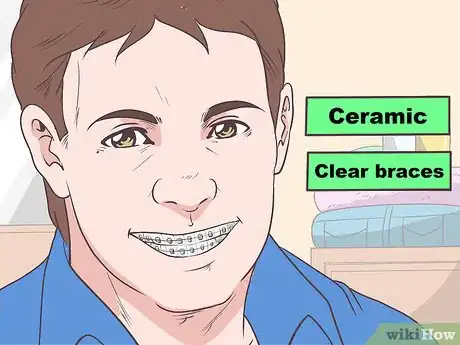
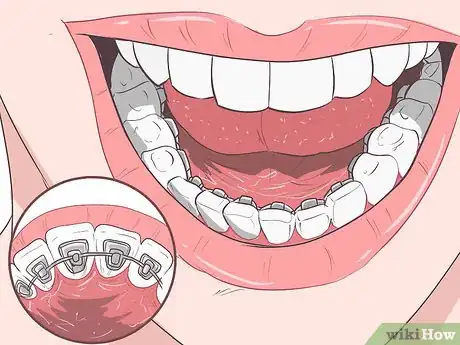
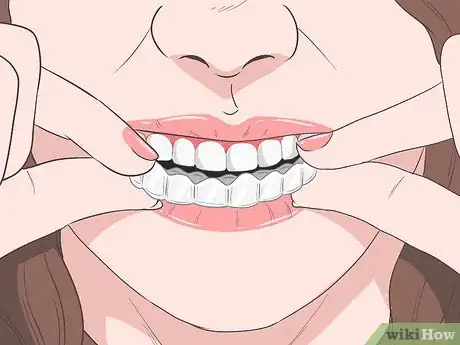

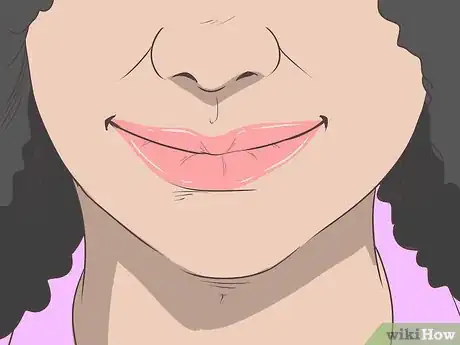

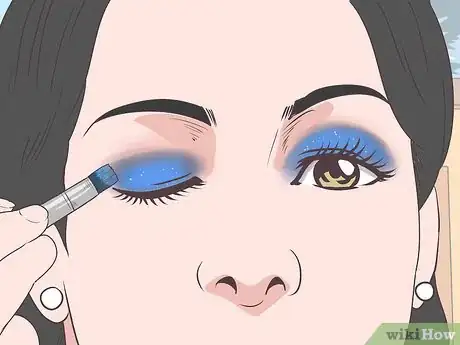
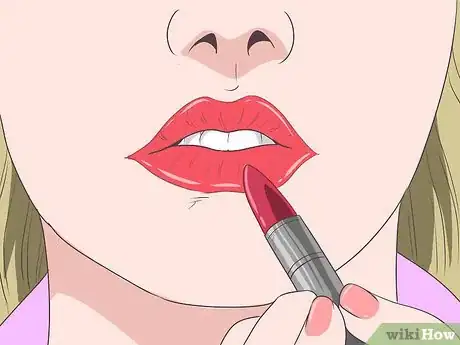

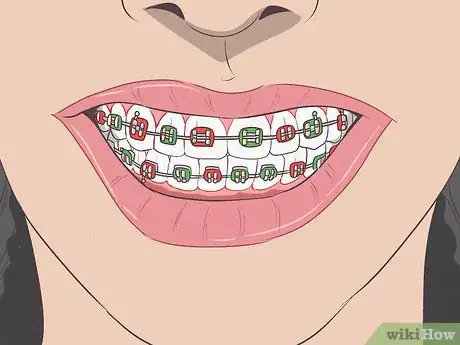

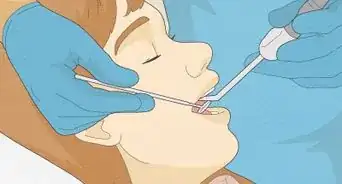
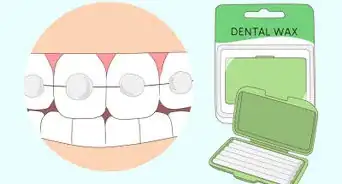
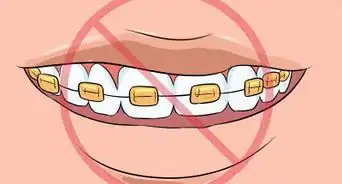
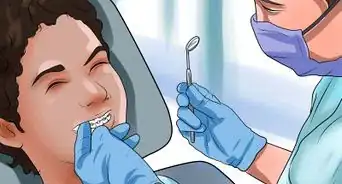


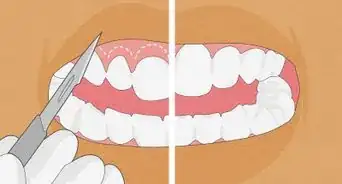

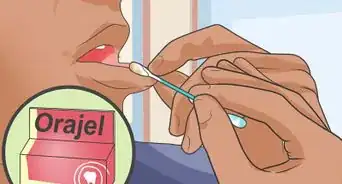

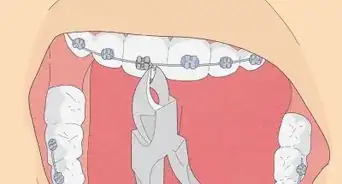
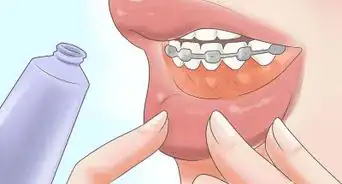
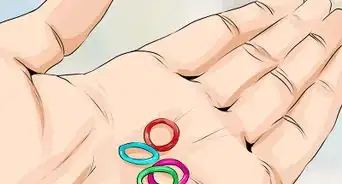









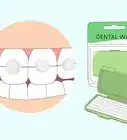
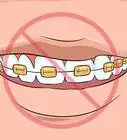
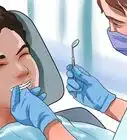



































Medical Disclaimer
The content of this article is not intended to be a substitute for professional medical advice, examination, diagnosis, or treatment. You should always contact your doctor or other qualified healthcare professional before starting, changing, or stopping any kind of health treatment.
Read More...